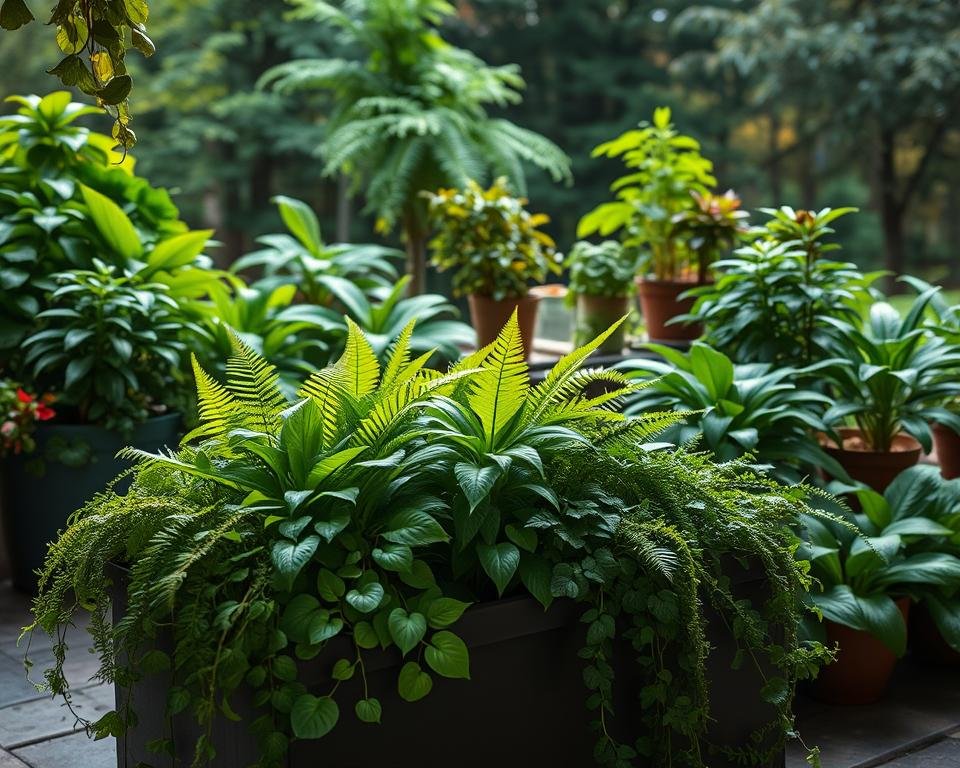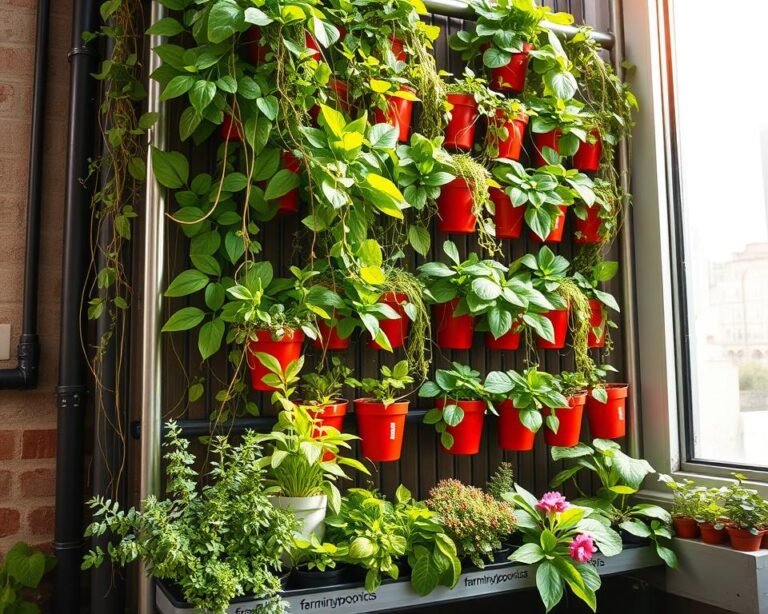Shade Plant Guide for Container Gardens
Every shaded corner of your yard is full of potential. Container gardening can turn dull spaces into vibrant gardens. With the help of a shade plant guide and the right containers, you can brighten even the darkest parts of your yard.
Starting your shade container gardening journey means understanding different types of shade. Some spots get dappled light, while others are very dark. Shade gardening techniques can help you make the most of these areas. They can turn them into beautiful, colorful spots that amaze everyone.
Shade plants come in a wide range of colors and textures. Imagine containers full of deep red leaves, soft pink flowers, and hanging vines. These can turn a dull corner into a stunning garden.
Key Takeaways
- Discover the potential of shade container gardening
- Learn about versatile shade-loving plants
- Transform dark outdoor spaces into vibrant gardens
- Explore creative container design techniques
- Understand different shade conditions and plant requirements
Understanding Shade Container Gardening Basics
Shade container gardening lets you turn dark spots into lively green spaces. It’s all about mastering low-light gardening. This way, you can make beautiful container gardens that do well in shady areas.
To start a successful shade container garden, first figure out the shade levels in your garden. Not all shaded spots are the same. Knowing the light levels helps pick the best plants for your containers.
Types of Shade Conditions
Shade can be broken down into three main types:
- Light Shade: Partial sunlight, often found under trees
- Moderate Shade: Light that’s mostly reflected, like a forest floor
- Heavy Shade: Very dim areas with little direct sunlight
Benefits of Container Growing in Shaded Areas
Container gardening in shaded spots has many benefits:
- It lets you move plants around easily
- It helps control the soil better
- It can make dark areas look brighter
- It protects delicate plants
Essential Container Requirements
When setting up shade container gardens, remember these key points:
- Make sure there are drainage holes
- Choose the right size container
- Use a light potting mix that holds moisture well
With the right knowledge, your shade container garden can turn hidden spots into lush, green havens.
Top Shade Plant Guide for Container Success
Creating stunning shade-loving container gardens requires the right plants. These plants should thrive in low-light conditions. Whether you’re into woodland gardening or indoor plant care, knowing about shade-loving plants is crucial.
Discover the top performers for your shade containers with these exceptional plant selections:
- Ferns: Boston and Maidenhair varieties excel in moist, shaded environments
- Begonias: Stunning blooms with unique foliage perfect for warm, humid spaces
- Impatiens: Colorful flowers flourishing in filtered shade, growing 8-15 inches tall
- Hostas: Remarkable foliage with diverse textures and colors
- Caladiums: Vibrant heart-shaped leaves in red, white, and pink
When selecting shade-loving plants for containers, consider these critical factors:
| Plant Type | Light Requirements | Container Suitability |
|---|---|---|
| Boston Ferns | Deep Shade | Hanging Baskets, Large Containers |
| Coleus | Partial Shade | Mixed Container Arrangements |
| Heuchera | Filtered Light | Small to Medium Containers |
“The secret to successful shade gardening is understanding each plant’s unique light and moisture needs.” – Garden Design Expert
Your shade container garden can become a lush, thriving landscape. Choose plants that complement each other’s growth habits and aesthetic qualities. Remember, partially shaded areas get 3-6 hours of direct sunlight daily. This is perfect for many shade-loving plants.
Design Principles for Shade Containers
Creating stunning shade container gardens needs careful planning and creative design. Your shade garden design can turn dark spaces into vibrant, lush displays. Gardening in shade areas requires choosing the right plants and arranging them thoughtfully.
Thriller, Filler, and Spiller Method
The thriller, filler, and spiller method is a great way to make shade containers look amazing. Here’s how to use it:
- Thriller: Tall, dramatic plants that create vertical interest
- Filler: Mid-height plants that add volume and texture
- Spiller: Trailing plants that cascade over container edges
Color Combinations for Impact
When designing shade containers, focus on foliage color and texture. Plants like Coleus and Coral Bells have stunning leaves that add visual depth.
| Plant | USDA Zones | Color Characteristics |
|---|---|---|
| Coleus | 10-11 | Vibrant multicolored leaves |
| Coral Bells | 4-9 | Silver, burgundy, and green foliage |
| Begonias | 6-11 | Soft pastels and rich greens |
Container Arrangement Techniques
Make the most of your shade garden design with these arrangement strategies:
- Group containers of varying heights
- Use vertical space with hanging baskets
- Create depth through layered plantings
- Select containers with customizable features
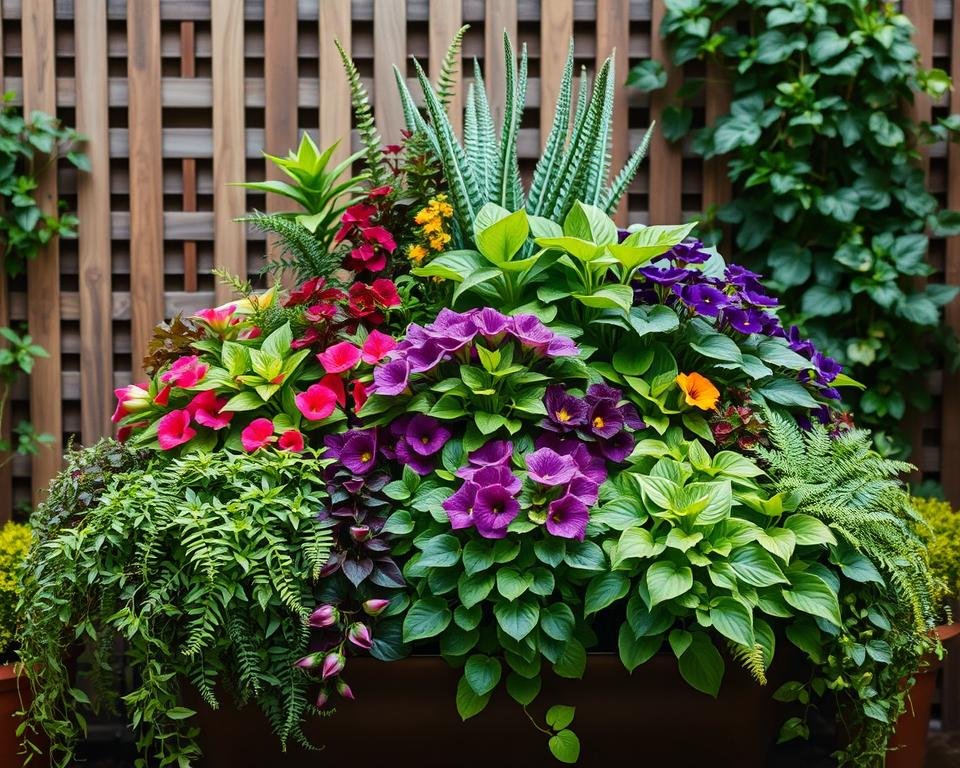
Most shade-loving plants need 2 to 4 hours of direct sunlight daily. Choose plants rated for full or dense shade for darker areas. This ensures a thriving and beautiful container garden.
Soil and Container Selection
Choosing the right soil and containers is key for a successful container garden in shaded areas. The right picks can greatly affect your plants’ health. Shade-loving plants need specific soil conditions to grow well, and the right container provides the best environment.
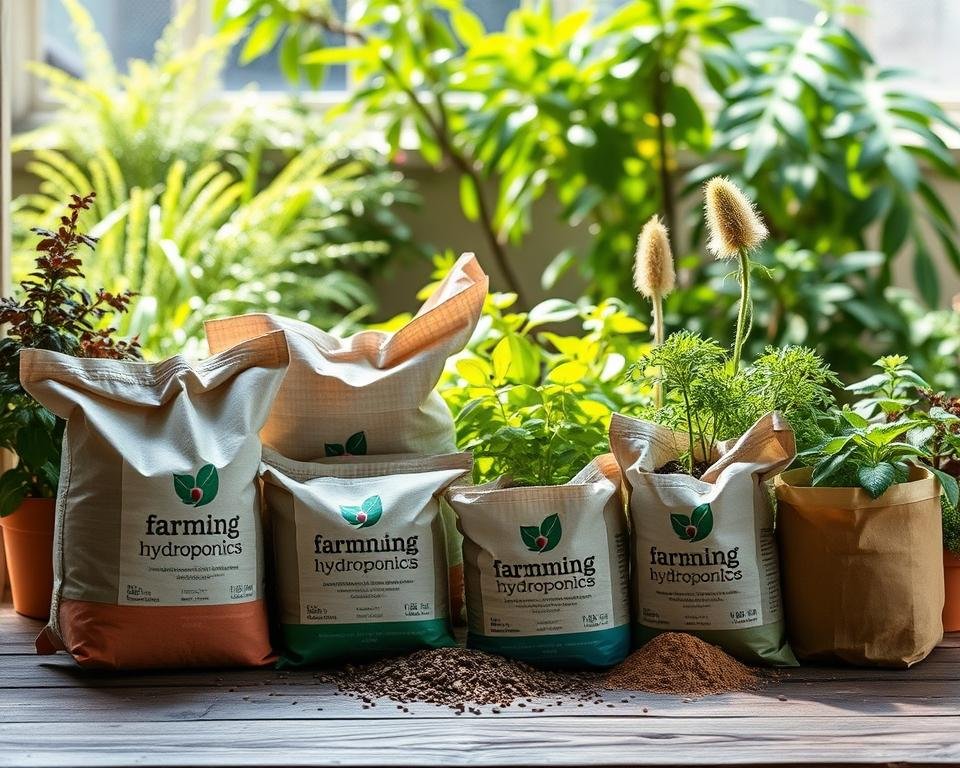
Begin by focusing on soil quality. For container gardening, a well-draining mix rich in organic matter is best. Organic materials like compost can greatly improve soil structure and nutrient content. Look for these key soil characteristics:
- pH balance for shade-loving plants
- High organic content
- Excellent drainage capabilities
- Nutrient-rich composition
“The right soil is the foundation of a successful garden, even in shaded spaces.”
Choosing containers is also important for both indoor and outdoor gardening. Different materials have their own benefits:
| Container Material | Pros | Best For |
|---|---|---|
| Ceramic | Excellent moisture retention | Shade-loving houseplants |
| Plastic | Lightweight, affordable | Outdoor container gardens |
| Terra Cotta | Natural drainage | Plants requiring consistent moisture |
Important factors for container gardening include proper drainage holes and the right size. Make sure your containers meet the needs of shade-loving plants. Dwarf shrub cultivars are great for small pots, adding flexibility to your garden.
- Measure container depth for root growth
- Check for adequate drainage
- Consider plant size and growth potential
Try out different soil mixes and containers to find the best for your shade garden. Remember, keeping an eye on moisture levels is crucial for healthy plants in shaded areas.
Maintenance and Care Tips
To make your shade plant guide flourish, you need to pay close attention to care. Container gardening in shaded spots requires special steps. These help keep your plants looking their best.
Watering Schedule and Techniques
Shaded areas make watering tricky. Plants there often need less water because the soil dries slower. Here are some tips for watering:
- Check soil moisture by inserting your finger into the soil
- Water when the top inch of soil feels dry
- Avoid overwatering, which can lead to root rot
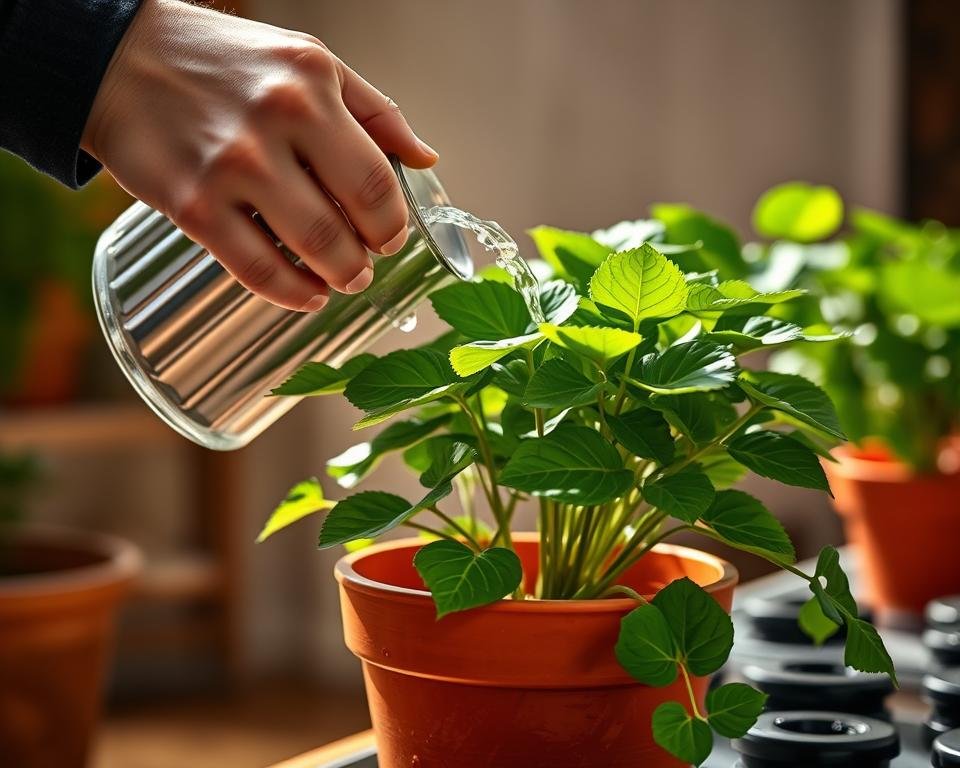
Fertilization Guidelines
Shade plants don’t need much fertilizer. Here’s how to give them the right nutrients:
| Plant Type | Fertilizer Recommendation | Frequency |
|---|---|---|
| Shade Perennials | Water-soluble, low-strength fertilizer | Once per growing season |
| Container Plants | Slow-release organic fertilizer | Early spring and mid-summer |
Pest Management Strategies
Keep your shade garden safe from pests with these steps:
- Use organic pesticides like neem seed extract
- Regularly inspect plants for early signs of pest damage
- Maintain proper air circulation around containers
- Remove affected plant parts immediately
By sticking to these care tips, your shade garden will flourish. It will look great with little effort from you.
Conclusion
Starting your shade container gardening journey opens up a world of creativity. You can turn dull, shaded areas into lively outdoor spots. With plants like coleus and begonias, your garden can be truly amazing.
Designing your shade garden is a fun adventure. You can mix different plants to create stunning looks. Whether you have a small balcony or a big patio, shade plants can make your space beautiful.
For a successful shade garden, know your light conditions and choose the right plants. Try out different containers and colors. Your garden is a canvas, waiting for your creativity.
Container gardening in shade is more than a hobby. It’s about making peaceful outdoor spaces. Start small, learn, and watch your garden grow into a beautiful reflection of you.

